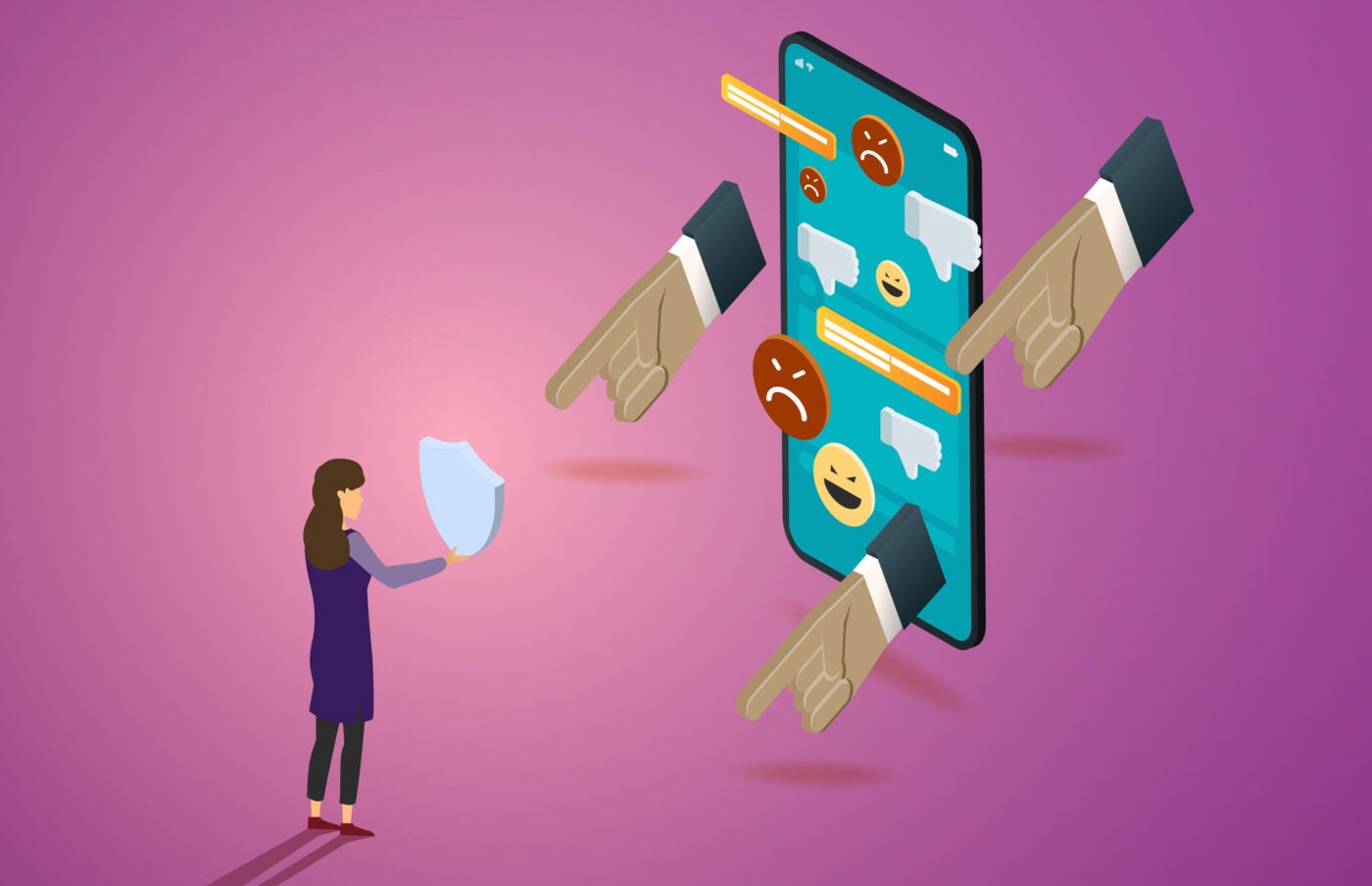
Opinion
Harassment in public health is real. Here’s how to respond.
In the first year of the COVID-19 pandemic, local health departments in the United States experienced at least 1,499 incidents of harassment. While public health workers were guiding us through an unimaginable catastrophe, they had to face the threat of harm both online and offline, egged on by doxing (the act of having their names and addresses posted online).
We don’t have specific data on how common such incidents are today, which reveals the lack of a systematic response within U.S. public health. However, we can be sure that this problem won’t go away on its own. A study led by Johns Hopkins researchers found that in 2021, a quarter of Americans believed it was OK to threaten a public health official. And, in the third year of the pandemic, children’s hospitals across the country endured a sharp jump in online harassment, with Boston Children’s Hospital facing bomb threats. Though anyone in public health might experience harassment, we can’t ignore racism, transphobia, and gender-based discrimination in a field with a workforce that is 79 percent women and 46 percent BIPOC and includes an increasing number of people who identify outside the gender binary.
In response, I have worked with Harvard’s Center for Health Communication to create the Digital Safety Kit for Public Health—a toolkit meant to help everyday public health professionals mitigate the harm of harassers.
Sign up for Harvard Public Health
Delivered to your inbox weekly.
Our work was catalyzed in part by the way vaccine expert Peter Hotez was targeted last summer by national media personalities. As dean of Baylor College of Medicine, Hotez could draw on his institutional resources and professional networks to navigate this turmoil. But nearly half of public health employees work in local agencies outside of big cities, with nowhere near the same resources. They aren’t likely to be harassed by someone as prominent as Joe Rogan, but it also doesn’t take as much to disrupt their offices.
With the toolkit, we also hope to help stem the flood of departures from the field. Half of state and local health department workers in place in 2021 are projected to leave by 2025. This at a time when it is estimated that local departments need 54,000 more full-time employees. Though we lack data on how harassment might impact these departures, it’s safe to say it doesn’t help with job satisfaction.
To be sure, harassment in public health is a complex issue with no quick fixes. As such, this is exactly the kind of problem our field should be good at addressing. Public health leaders regularly promote treatment, prevention, and mitigation simultaneously. We are trained to approach complex issues from multiple angles, with an eye toward sustainable solutions. Though daunting, online harassment in public health is not an insurmountable problem.
While we need a systemic response from public health institutions, we also need steps we can take to protect ourselves right now. This is where the Digital Safety Kit comes in. It includes personal technological steps we can take to help protect ourselves. For example: Use secure passwords so it’s harder for someone else to break into one of your online accounts. Also: Delete sensitive data from private messages in case someone breaks into your account. It also includes social steps we can take to protect each other, such as how to discuss our desired level of online privacy with coworkers and employers.
It’s not enough for public health workers to protect themselves, so I’m calling on decision makers at hospitals, universities, and government agencies to protect their workforce through concrete actions, including:
- Assessing risk by checking for online disinformation campaigns targeting your institution.
- Managing risk by purchasing institutional accounts for services that delete personal info from data clearinghouses.
- Mitigating harm by preparing an emergency response workflow for targets of online harassment. Advocate for more financial support of local health departments.
As a PhD candidate in public health, I admit I am daunted by the scale of the challenges ahead of us, including the intense political divisions around public health. More areas of public health are becoming hot-button issues. We now live with COVID while facing the constant threat of further pandemics. We need bold ideas, novel thinking, and solidarity. At the same time, we are working at a time of energizing opportunity. We can still build a version of public health that our communities deserve. By necessity, this includes protecting our workforce. Please download the toolkit and share this call to action with public health leaders.
Source illustrations: lerbank / iStock


